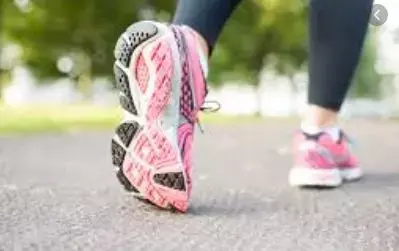- Home
- Medical news & Guidelines
- Anesthesiology
- Cardiology and CTVS
- Critical Care
- Dentistry
- Dermatology
- Diabetes and Endocrinology
- ENT
- Gastroenterology
- Medicine
- Nephrology
- Neurology
- Obstretics-Gynaecology
- Oncology
- Ophthalmology
- Orthopaedics
- Pediatrics-Neonatology
- Psychiatry
- Pulmonology
- Radiology
- Surgery
- Urology
- Laboratory Medicine
- Diet
- Nursing
- Paramedical
- Physiotherapy
- Health news
- Fact Check
- Bone Health Fact Check
- Brain Health Fact Check
- Cancer Related Fact Check
- Child Care Fact Check
- Dental and oral health fact check
- Diabetes and metabolic health fact check
- Diet and Nutrition Fact Check
- Eye and ENT Care Fact Check
- Fitness fact check
- Gut health fact check
- Heart health fact check
- Kidney health fact check
- Medical education fact check
- Men's health fact check
- Respiratory fact check
- Skin and hair care fact check
- Vaccine and Immunization fact check
- Women's health fact check
- AYUSH
- State News
- Andaman and Nicobar Islands
- Andhra Pradesh
- Arunachal Pradesh
- Assam
- Bihar
- Chandigarh
- Chattisgarh
- Dadra and Nagar Haveli
- Daman and Diu
- Delhi
- Goa
- Gujarat
- Haryana
- Himachal Pradesh
- Jammu & Kashmir
- Jharkhand
- Karnataka
- Kerala
- Ladakh
- Lakshadweep
- Madhya Pradesh
- Maharashtra
- Manipur
- Meghalaya
- Mizoram
- Nagaland
- Odisha
- Puducherry
- Punjab
- Rajasthan
- Sikkim
- Tamil Nadu
- Telangana
- Tripura
- Uttar Pradesh
- Uttrakhand
- West Bengal
- Medical Education
- Industry
Worn shoes cause structural changes in foot loading in gout patients: Study

A recent study found signs of wear on the upper, midsole and outsole in the worn footwear after six-months. These changes to the structural properties of the footwear may affect forefoot loading patterns in people with gout,suggested researchers from the study published in BMC Musculoskeletal Disorders.
In clinical trials, good quality athletic shoes offer short-term improvements (two-months) in foot pain and disability in people with gout, but these improvements are not sustained over time. This may be due to wear and subsequent changes to the structural integrity of the shoe. The aim of this study was to examine the effects of wear on plantar pressures and footwear characteristics in shoes over six-months in people with gout.
For the study design,Forty people with gout participated in a cross-sectional repeated measures study. Participants wore a pair of commercially available athletic footwear for six-months. Participants then attended a study visit where the worn footwear was compared with a new pair of the same model and size of footwear. Wear characteristics (upper, midsole, outsole) and plantar pressure were measured in the two footwear conditions. Wear characteristics were analysed using paired t-tests and Fisher's exact tests. Plantar pressure data were analysed using linear mixed models.
Results highlighted some interesting facts.
- Increases in medial midsole (P < 0.001), lateral midsole (P < 0.001) and heel midsole (P < 0.001) hardness were observed in the worn shoes.
- Normal upper wear patterns (P < 0.001) and outsole wear patterns (P < 0.001) were observed in most of the worn shoes.
- No differences in peak plantar pressures (P < 0.007) were observed between the two footwear conditions.
- Reduced pressure time integrals at the first metatarsophalangeal joint (P < 0.001), second metatarsophalangeal joint (P < 0.001) and hallux (P = 0.003) were seen in the worn shoes.
"This study is the first to report on footwear characteristics and plantar pressures in people with gout over 6 months. Our key findings show reduced pressure time integrals were observed at 1MTP, 2MTP and the hallux in the worn footwear. We also observed a reduction in heel counter and midfoot stiffness, an increase in midsole hardness, together with signs of upper, midsole and outsole wear occurred following six-months of use.In conclusion, there were reductions in heel and forefoot height, increases in midsole hardness and normal upper and outsole wear patterns following six-months of footwear use. These changes in the mechanical properties of the footwear may impact foot function, as observed by alterations in forefoot loading patterns between new and worn footwear."the team concluded.
For full article follow the link: https://doi.org/10.1186/s12891-021-04370-x
Primary source: BMC Musculoskeletal Disorders
Dr Satabdi Saha (BDS, MDS) is a practicing pediatric dentist with a keen interest in new medical researches and updates. She has completed her BDS from North Bengal Dental College ,Darjeeling. Then she went on to secure an ALL INDIA NEET PG rank and completed her MDS from the first dental college in the country – Dr R. Ahmed Dental College and Hospital. She is currently attached to The Marwari Relief Society Hospital as a consultant along with private practice of 2 years. She has published scientific papers in national and international journals. Her strong passion of sharing knowledge with the medical fraternity has motivated her to be a part of Medical Dialogues.
Dr Kamal Kant Kohli-MBBS, DTCD- a chest specialist with more than 30 years of practice and a flair for writing clinical articles, Dr Kamal Kant Kohli joined Medical Dialogues as a Chief Editor of Medical News. Besides writing articles, as an editor, he proofreads and verifies all the medical content published on Medical Dialogues including those coming from journals, studies,medical conferences,guidelines etc. Email: drkohli@medicaldialogues.in. Contact no. 011-43720751


